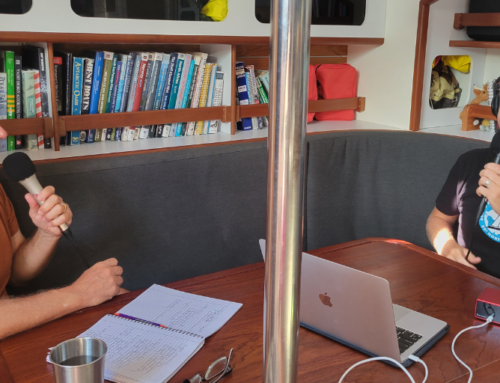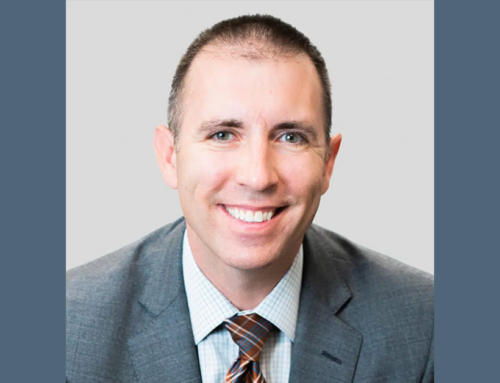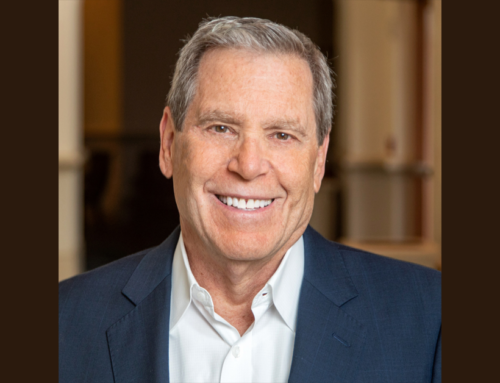Are your multi-millionaire clients any happier than your merely millionaire clients? As your clients’ net worth increases, have you seen a direct rise in their level of happiness? Have you ever felt frustrated that all your hard work on the financial side of your client relationships didn’t move the needle in their sense of well-being?
Helping clients save, grow, and protect their money is a service that clients value and appreciate. But there is so much more you can do to help them beyond just the numbers.
On a scale of 1 to 10, with 10 being maximum life satisfaction and well-being, what if you could help your clients move from a 6 to a 9? Or even to a 10? Think about how that would add meaning to your work and satisfaction to your client’s life.
Some advisors have already moved toward this more “positive” form of financial planning and the impact has been astonishing.
About 20 years ago, the concept of positive psychology began to develop. Initial impetus for the concept came from Dr. Martin Seligman. Positive psychology, at its core, is the scientific study of what makes life most worth living. In other words, it seeks to understand how we can flourish in life. And hey, who doesn’t want that?
My recent podcast guest, Dr. Martin Seay of Kansas State University, researches how we can apply the concepts of positive psychology to the financial planning process. And advisors who incorporate Dr. Seay’s work won’t be drifting off course into “touchy-feely” territory. They’ll be putting sound scientific data into action and future-proofing their businesses.
To continue reading the rest of this post, please register below with your email address.
Key Insights on Positive Psychology
Parallel paths that now intersect.
Interestingly, Dr. Seay’s field and financial planning have both gone through evolutions in recent years. Whereas psychology has traditionally focused on treating unhealthy people, Dr. Seay is on the cutting edge of a new movement that seeks to improve the lives of healthy people as well. “There’s something more than functioning,” Dr. Seay says. “There is an ability to take somebody that is functioning well mentally and take them to a higher level of satisfaction, a higher level of meaning in life, a higher level of well-being.”
So while the traditional model of psychology focused on treating deficits, such as depression, in the hope of returning patients to a more neutral state, positive psychologists like Dr. Seay want to help people who start from a position of strength move to a higher plane where they flourish in life.
This dovetails nicely with the fundamentals of the Return on Life philosophy. Just as Dr. Seay and other researchers have found that there’s more to life than being healthy, those of us who’ve embraced life-centered planning believe there’s more to the client-advisor relationship than helping rich people get richer.
Rather, it’s about using tools, assessments, and more effective human to human dialogue to help clients achieve a better relationship with their money and get more clarity on their life, so they can use their money to live their best life possible right now.
New tools for new thinking.
Dr. Seay told me that one of the most exciting developments in positive psychology is that the research has finally matured enough to start providing tools that financial advisors can use.
A key element of positive psychology is Dr. Martin Seligman’s Well-Being theory, which states that people will flourish in life if they have achievement in five areas:
- Positive emotion – spending time on activities that make us feel good.
- Engagement – a state of well-being where you lose yourself in an activity, like a hobby (similar to the concept of “flow.”).
- Relationships – with family, friends, and community.
- Meaning – finding meaning with the way you’re spending your time and the way you’re spending your money.
- Accomplishment – feeling like you are moving closer to and accomplishing life goals, such as progressing in your career.
Dr. Seligman has developed a PERMA Meter that advisors can use to start a dialogue with clients about where they are in life, and where they’d like to be. We’ve also created an advisor-specific tool called The ROL Index to measure a client’s well-being related to 10 aspects of life.
But the great thing about positive psychology is that it’s adaptable to financial advisory in more than one way. If you don’t want to work through an assessment tool, Dr. Seay also recommends using the PERMA concept as a way of reframing more traditional discovery questions.
“Instead of looking at a budget as purely expenditures, you can look at those as investments in different areas of your well-being capital, and that’ll provide a lens to communicate through to a client,” he says. In other words, you can add more emotional attachment to the numbers and increase the likelihood the client will follow through on saving and spending plans—and derive more joy in the process.
Knowing your limits.
“But Steve … I don’t want to be a therapist. I’m a financial planner.”
Picture a spectrum where therapist is on the far left and financial planner is on the far right. Applying a more positive approach to planning simply means you’re moving a little more to the left. And the degree to which you move is a function of your training and comfort level.
Neither Dr. Seay nor I are suggesting that an advisor should do any true psychological work. It can be tricky to determine where pivoting your practice in a new direction might cross a boundary that only trained psychological professionals should cross.
“Positive reshaping and reframing are likely going to be just fine,” Dr. Seay says. If you’re using the PERMA playbook or the ROL tools Mitch Anthony and I have developed to help your clients view their finances through the lens of well-being, you’re sitting comfortably at the intersection of where money and life meet. Most advisors should be able to intuit if a conversation about, say, a client’s experience of money as a child might be veering into more complex family dynamics beyond our core competencies.
But speaking of PERMA as a playbook, try to think about the advisor’s evolving role as more of a coach than a therapist. There are two sides to being a good coach: mastery of the Xs and Os, and being able to inspire players to do great things. Some players might require more drilling on the fundamentals. Others might need more help with the aspirational side. A good coach is able to tailor his or her approach to specific players, and help that player achieve.
Positive outcomes all around.
The coaching metaphor also gets to the heart of what positive psychology provides that traditional advisory – as well as robos and apps – can’t. A digital platform might draw up the right Xs and Os for an optimum ROI, but it can’t “coach up” the nervous millennial investor who’s experiencing market volatility for the first time.
The value add will be a huge positive for advisors who start reframing the way they think about their clients’ money. On top of that, according to Dr. Seay, science tells us that the value to clients will be even greater:
“Individuals that experience well-being, especially through experiencing positive emotion, will earn higher incomes, succeed at work, are more likely to be able to exert willpower and self-control over unhealthy urges. They’re more likely to save money. They’re more likely to be able to have a preference for the future and save. There’s really clear evidence that, in ways that directly matter to a financial planner, positive psychology works.”
We’re still at the very beginning of this dynamic shift, and as both researchers like Dr. Seay and advisors like you work with more clients and amass more data, together we’ll get better and better at harnessing the power of positivity. This marriage of art and science, the head and the heart, and compassion and reason, won’t just transform the way the world plans. It will help our clients flourish. And that my friends, is priceless.
Resources
– Kansas State Institute of Personal Financial Planning Visit Dr. Seay and his team online.
– Connect with Dr. Seay on LinkedIn
– PERMA Meter Dr. Martin Seligman’s tool for measuring well-being can be a great resource for advisors.
– The ROL Index A tool Mitch Anthony and I developed to help advisors measure their clients’ well-being in 10 aspects of life.
– “The Platinum Rule” by Tony Alessandra and Michael J. O’Connor Dr. Seay and his students read this in their book club and were impressed with its focus on tailoring your communications to your target audience.
– Values Clarification Toolkit Click here to download this FREE tool and start living your values.









